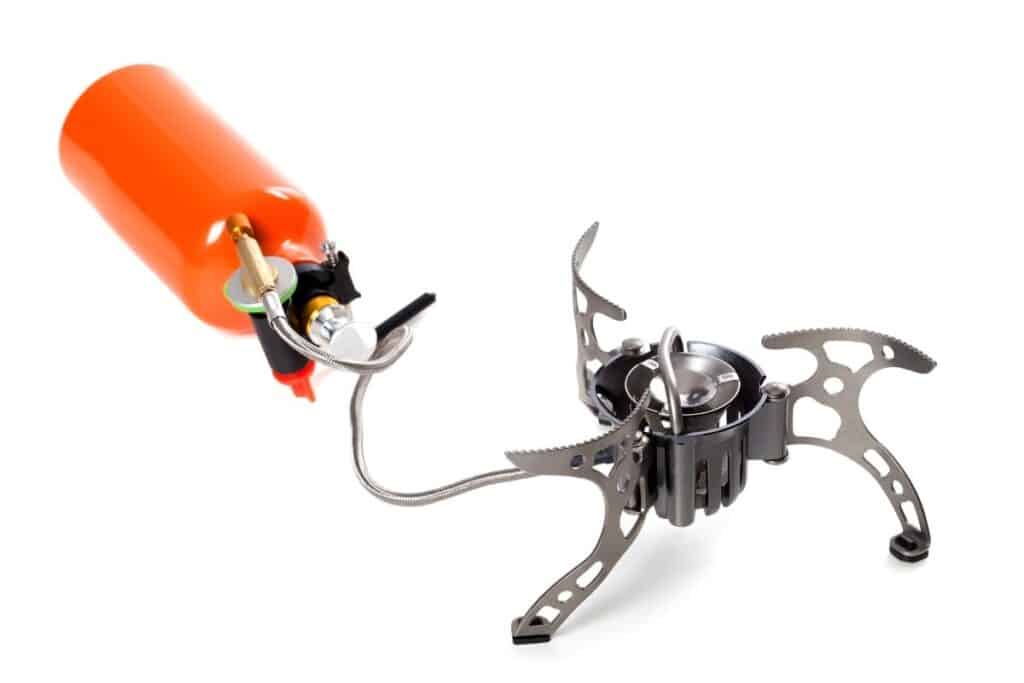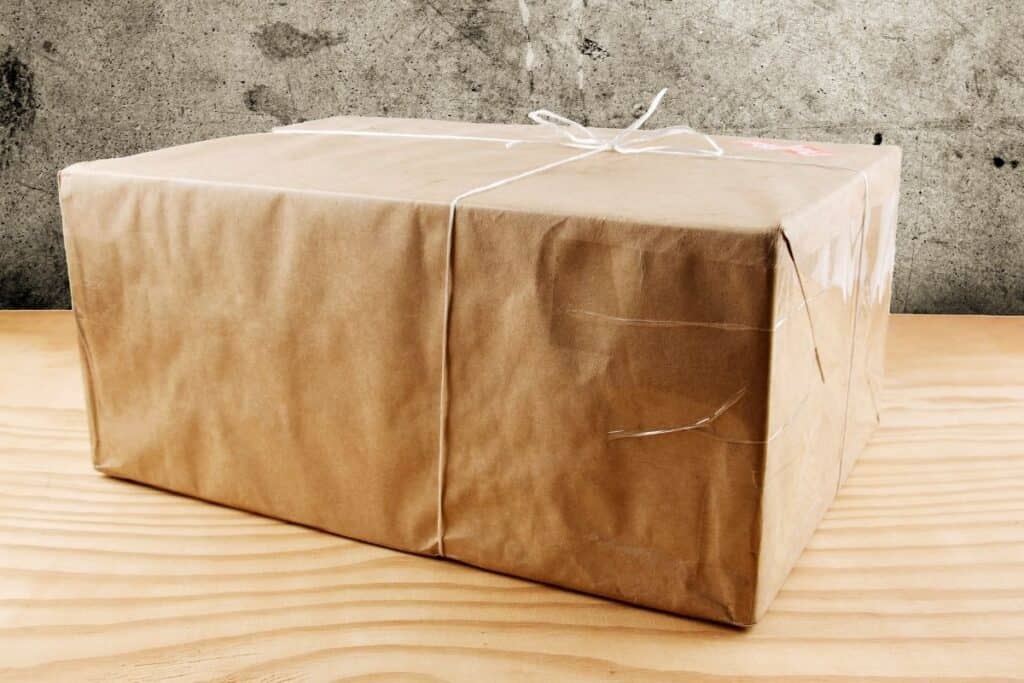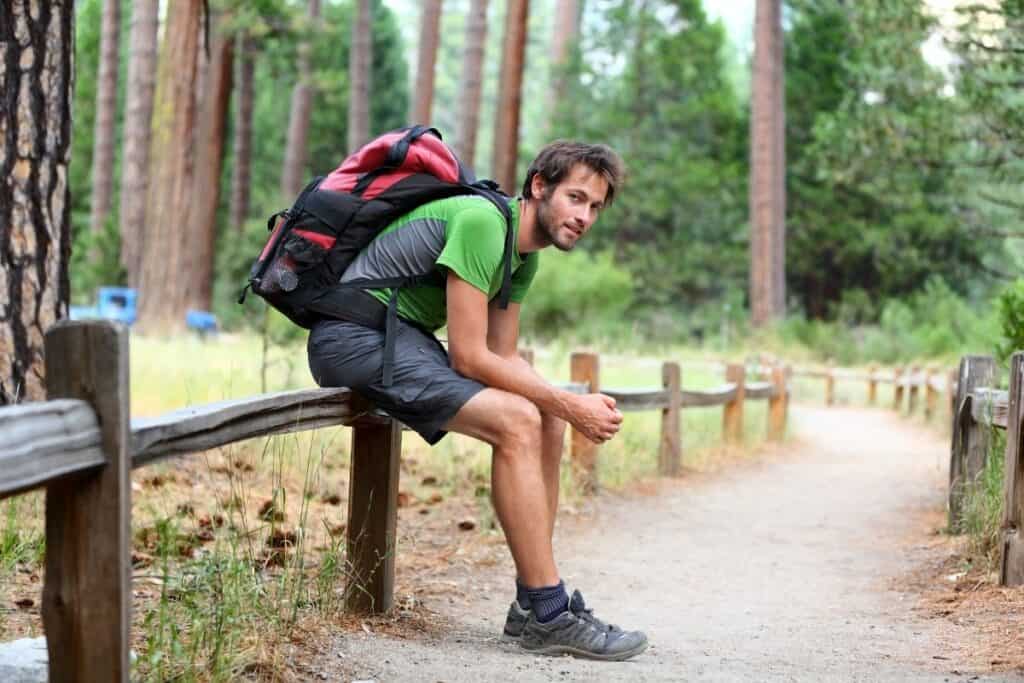
If you’ve ever tried planning an epic backpacking trip to a remote location, you’ve probably found yourself stuck trying to figure out how to get camping fuel delivered as well. Since flying the fuel isn’t an option, you may find yourself wondering if you can mail camping fuel.
Camp fuel canisters containing butane or butane mixes are mailable through USPS Ground when their volume is less than one liter, they are securely packaged, and the package is specifically labeled as “ORM-D, Consumer Commodity, Surface Only”.
As you can see – this is a very specific set of requirements that need to be met to ship fuel canisters! Here are a few additional tips to make sure that the process goes smoothly for you.
Tips for Mailing Gas Canisters via USPS
You can mail gas canisters through the U.S. Postal Service only under particular conditions. You have to make sure to meet these special conditions before you go packing and shipping your canisters.
Shipping an unlawful material through the USPS can result in denial of your package, which could be a disaster if you leave ahead of it expecting it to get to your destination. So, make sure to follow these steps to make sure your package gets shipped!
The best way to make this process run smoother is to speak with your local postmaster in advance. These regulations are very specific, and not every post office clerk will be familiar with them.
Takeaway: Befriend your local knowledgeable USPS resource!
Once you have a chance to speak with them, explain what you want to do i.e. ship camping fuel canisters, and explain how you plan to safely ship them by following the guidelines from USPS. Doing so guarantees that the USPS will know there’s a hazardous material in your package and handle it appropriately.
According to the Pacific Crest Trail’s website, there’s usually about a 50/50 chance you’ll be able to convince a postmaster to send hazardous materials via ORM-D shipping.
Many postmasters don’t know about these special regulations and may end up sending you away! This is why it’s handy to have the specific regulations on hand to share as proof.
Here are the the two specific USPS resources that you’ll want to review and have handy:
Once you’ve gotten their buy-in, you’ll need to securely package your container and clearly label the package with the words “ORM-D, Consumer Commodity, Surface Only“.
This super secret password lets postal workers know that there is a hazardous substance inside and to handle it with care during shipment 😉
How Long Does it Take to Mail Camping Fuel?
When you mark a package with ‘ORM-D,’ you’re limited to ground-delivery only. Luckily, most deliveries within the U.S. travel over the ground anyway!
But how long will it take to ship your package?
Surprisingly, the USPS ground shipping system has gotten pretty speedy! We’re used to hearing jokes about snail mail, but in this case, it’s usually not a problem anymore…
USPS ground delivery usually takes between 2 and 9 days to reach its destination anywhere inside the continental U.S. Considering it takes around a day and a half of non-stop driving just to drive coast to coast, this is pretty reasonable!
One exception to these rough delivery timelines is around the Christmas/winter holidays.
Due to the large spike in deliveries that occurs around this time, you’ll want to plan for at least an extra few days for delivery. Perhaps even an entire week to play it safe.

Should You Mail Camping Fuel?
There are only a couple of cases where we think you’d need to mail camping fuel, and you can work around all of them.
If you’re driving across the U.S. to get to your destination, you’re already set. If you can’t fit it in your car, you can’t carry it on the trail anyway! This is a great forcing function to ensure that you’re taking only the essential items on a trip.
You also might want to send some camping fuel to a friend who’s on a long-distance hike like the Appalachian or Pacific Coast Trails. While there are stores at certain points along they way, they’re probably going to need some remote resupply help!
Finally, you might be taking a flight to your destination. In this case, you may find that TSA is highly skeptical about compressed gas canisters of any sort (for good reasons). You will not be able to take camping fuel on a plane.
So, what’s left? MAIL!
Again, you can mail camping fuel under certain conditions, but the process requires effort on your part to make it work. You’ll have to print out documents, make your case, mark your package, and then send it.
Not to mention, plane rides across the U.S. don’t usually take any more than a few hours. You’ll be waiting at your destination, possibly for days, as the USPS handles your very unique package and tries to process it safely.
Granted, you can overcome this time gap with good planning. But that’s still an extra step.
Again, you’re unlikely to find a town on a trail or near a national park that doesn’t sell necessary camping supplies. Maybe there won’t be an REI or Cabella’s, but there will be something. Gift shops are an excellent place to start, and if they don’t have what you need, try grocery stores and gas stations.
In any case, you’re probably better off buying fuel at your destination or packing it with you when you go. The process for sending fuel canisters is long and exhausting and doesn’t have many advantages when compared to the alternatives.

Where to Get Camping Fuel Along the Trail
Since you won’t want to send camping fuel via the USPS, you might want to try finding places along the trail. There are many stores and outlets that sell camping fuel to campers in need and won’t make you present documented proof of legality.
Gas stations are a fine place to start!
While you might not expect gas stations to carry camping supplies, many gas stations let their managers select their stock to maximize profits. This fact means that at gas stations along trails or near parks, you’re likely to find camping supplies in gas stations.
If not, you’ll at least find some ramen, spam, hand sanitizer, or other helpful goodies. In any case, a stop at the gas station can help you get what you need to make it through your next adventure. I’ve even found carabiners at gas stations.
Next up, we have gift shops.
Gift shops are placed along the perimeters of national parks and towns near trails to make money off nature-lovers. Mostly, that means tricking tourists into buying $12 signs that say, “I saw Seneca Rocks and all I got was this dumb fridge magnet.”
But there are handy items for sale in some gift shops. If owners are smart, they’ll be catering to every kind of visitor, from the casual tourist to the hardcore backpacker.
You can usually find all sorts of camping supplies in gift shops. I’ve found walking sticks, sleeping bags, tents, and all manner of backpacking goodies just by strolling the aisles of my local park’s gift shops.
Since it’s so important, camping fuel will usually be front and center among a gift shop’s products. You can generally find camping fuel near fire-starters or matches, or you can ask the shopkeeper if he carries camping fuel.
Finally, REIs and other outdoor superstores are great places to find camping fuel, but you already knew that. A quick search in your GPS for an REI, Cabella’s, or Bass Pro will reveal whatever sportsman’s emporiums you need to get through your trek.
Although it might seem tempting to find ways to use the fuel you already have, if there are alternatives, you should probably take them. Campers can find fuel easily in locations along their trails or parks of choice, and refueling most likely won’t be too big of a challenge.
If you’re having trouble fitting fuel in your backpack, try economizing better. Stuffing your shirts and pants into your bag along with packs of ramen and bags of beef jerky may be tempting for the sake of ease, but unwrapping your food, crushing it up if you can, and putting it in one bag for each kind of food.
Saving this space will give you plenty of room for extra canisters of fuel, so you don’t have to refuel along the trail.
Related Posts
If you found this article helpful, then make sure to also take a look at some of these related resources!
